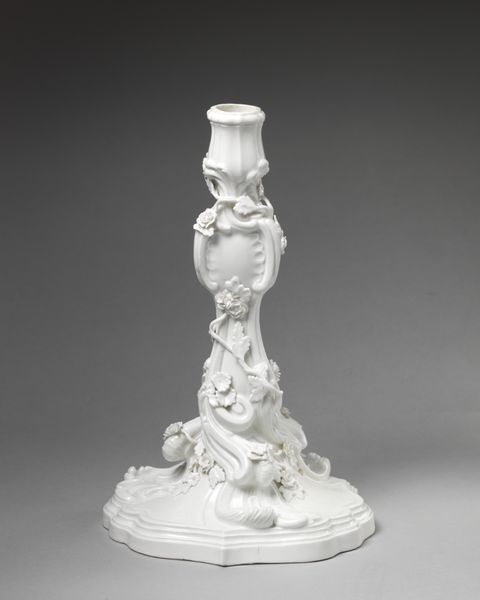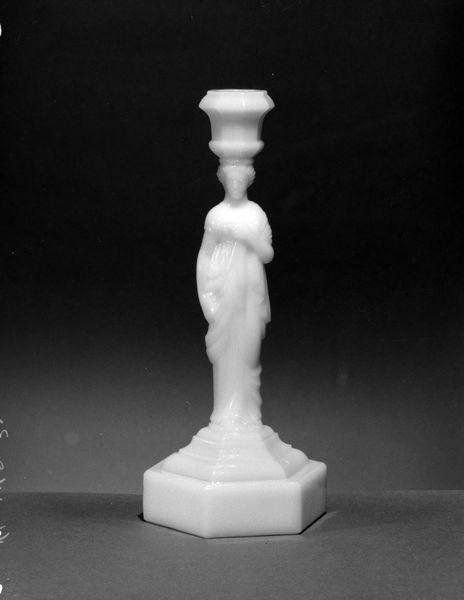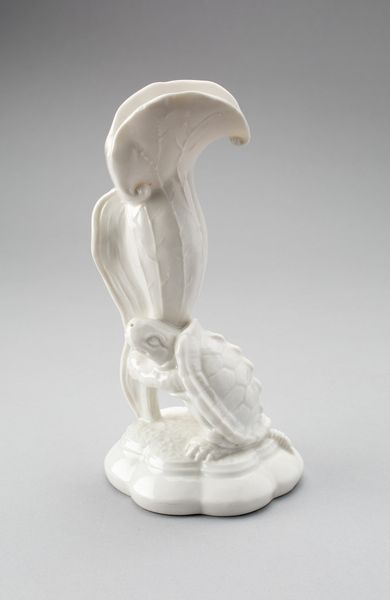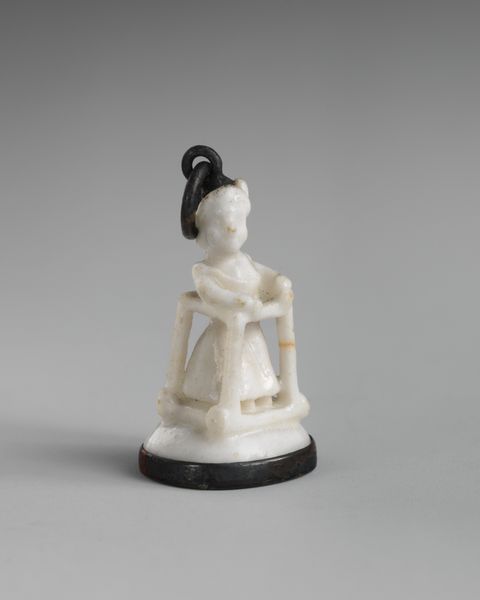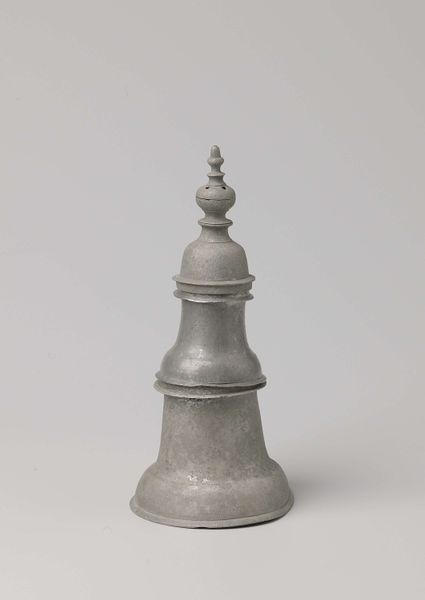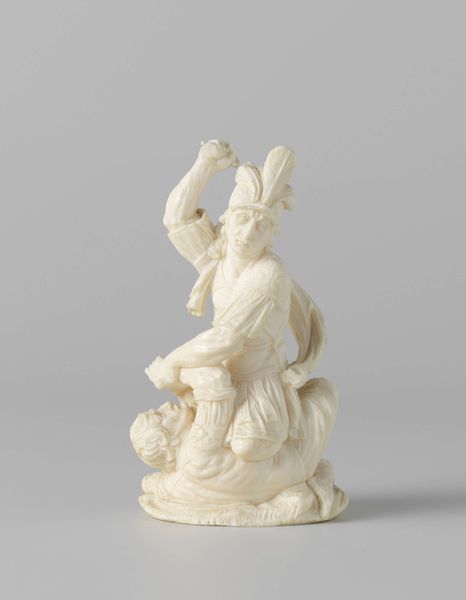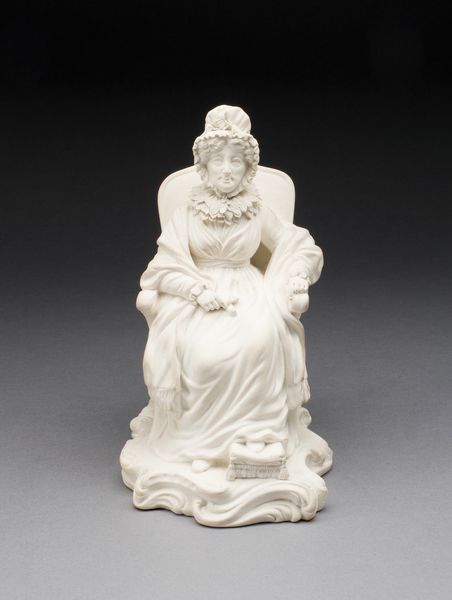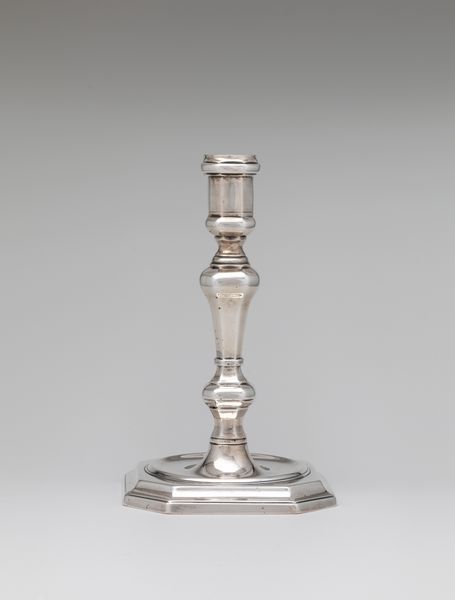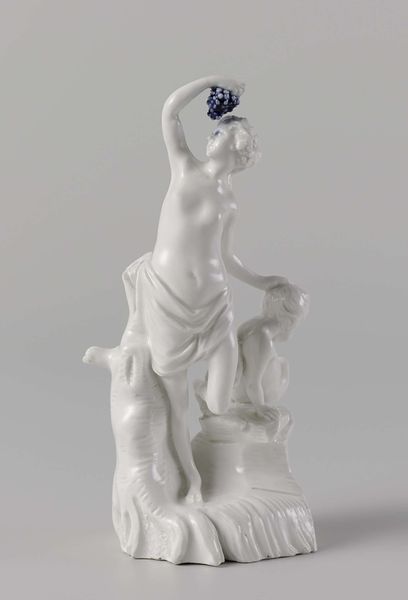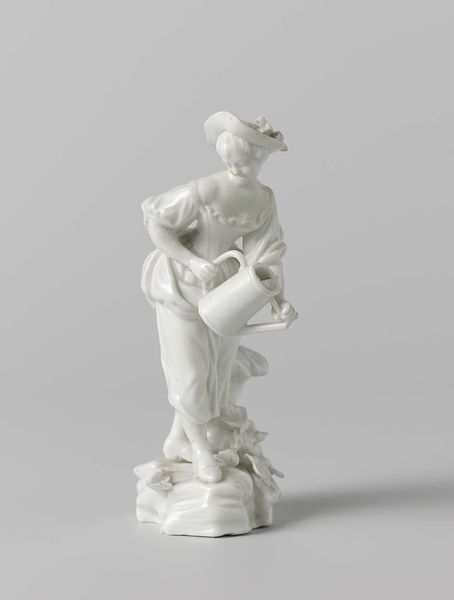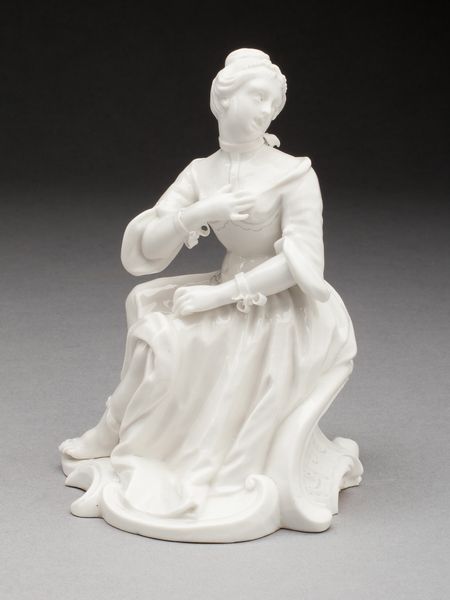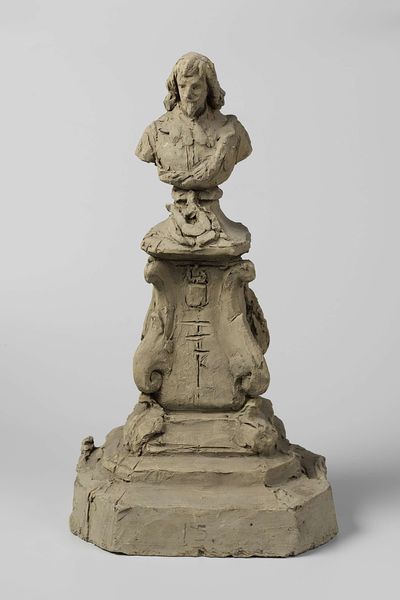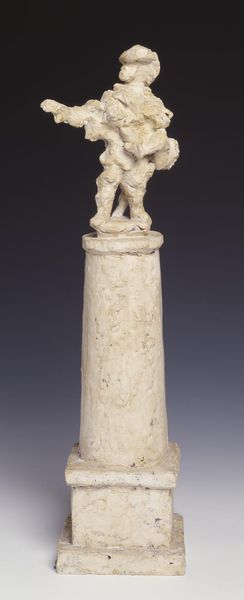
Dimensions: H. 11.4 cm (4 1/2 in.)
Copyright: Public Domain
Editor: Here we have a porcelain sculpture, "Chess Piece: Knight," created between 1762 and 1796 by Höchster Porzellanmanufaktur. It has such a clean, almost neoclassical feel to it, despite being identified as Rococo in style. What strikes you about this piece? Curator: Its role as a chess piece crafted in porcelain tells a fascinating story about the 18th-century aristocratic patronage and the rise of porcelain manufactories. To understand this, we need to consider the context: who were commissioning these objects, and what purpose did they serve beyond the purely functional? It also makes me wonder how these expensive decorative objects became invested in the world of strategic thought we associate with chess. Editor: So it’s not just a chess piece; it's making a statement? Curator: Precisely. Rococo art, including these kinds of decorative objects, served as a tool to cultivate social status and express intellectual sophistication in an increasingly competitive aristocratic public sphere. The delicate porcelain challenges the traditional associations with chess and masculinity. What sort of social "game" might these artworks have been enlisted in? Editor: That makes me think about who even *could* afford something like this. This elevates chess, and perhaps, the players, into something quite luxurious. Curator: Exactly. Furthermore, it places the artwork not merely as a static aesthetic object but an active participant in power dynamics of that period. Did owning something like this allow access to different social groups, cultural knowledge, or other avenues of distinction? Editor: I never would have considered the role that decorative arts could play in 18th-century social and political life. Thanks for illuminating that! Curator: And thank you for providing the opportunity to revisit these objects within their historical contexts!
Comments
No comments
Be the first to comment and join the conversation on the ultimate creative platform.
